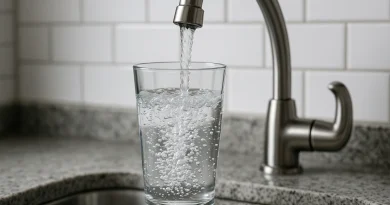
Bacteria and Pathogens Found in Untreated Water
Clean water is one of the most essential resources for human health, yet millions of people around the world still rely on untreated water sources for drinking, cooking and bathing. While this may seem harmless in remote or natural settings, untreated water can contain a dangerous cocktail of bacteria, viruses, and parasites that pose serious health risks.
Whether from a creek in the wilderness, an untreated well, or a contaminated municipal source, drinking unfiltered water could lead to illness or worse. In this article, we’ll explore some of the most common pathogens found in untreated water and examine how they affect human health. Understanding these threats can help you make informed decisions about water safety at home and during travel.
1. Escherichia coli (E. coli)
E. coli is one of the most widely known bacteria found in untreated water. While many strains of E. coli are harmless and naturally found in the human gut, certain types, especially E. coli O157:H7, can cause severe health problems.
How it affects humans:
Infection from pathogenic strains of E. coli often results in abdominal cramping, vomiting, and bloody diarrhea. In vulnerable populations such as young children and the elderly, complications can escalate to hemolytic uremic syndrome (HUS), which can cause kidney failure and even death.
2. Giardia lamblia
Giardia is a microscopic parasite that lives in the intestines of people and animals. It spreads through the fecal-oral route, meaning it can enter water sources contaminated with feces from infected humans or animals.
How it affects humans:
Giardiasis, the illness caused by Giardia, can lead to symptoms such as watery diarrhea, bloating, fatigue, and weight loss. Symptoms often begin one to two weeks after infection and may last several weeks if untreated.
3. Cryptosporidium
Often referred to as “Crypto,” Cryptosporidium is another protozoan parasite that survives in water and is highly resistant to chlorine disinfection, making it a challenge even for some treated water systems.
How it affects humans:
Ingesting this pathogen can cause cryptosporidiosis, which involves watery diarrhea, dehydration, nausea and stomach cramps. The illness can be particularly dangerous for people with weakened immune systems.
4. Salmonella
Salmonella bacteria are usually associated with foodborne illness, but they can also thrive in contaminated water sources, particularly those polluted by human or animal waste.
How it affects humans:
Salmonella infection can trigger symptoms like fever, stomach cramps, nausea and diarrhea. While most healthy individuals recover without medical intervention, severe infections can spread to the bloodstream and require hospitalization.
5. Vibrio cholerae
This is the bacterium responsible for cholera, a disease that has caused widespread epidemics, especially in regions lacking proper sanitation and clean water supplies.
How it affects humans:
Cholera leads to profuse watery diarrhea and rapid dehydration. Without treatment, it can be fatal within hours. Outbreaks often occur after natural disasters or in areas with poor infrastructure and limited access to safe drinking water.
6. Legionella pneumophila
Legionella is a naturally occurring bacterium found in freshwater environments. It can become dangerous when it grows in large quantities within man-made water systems like plumbing, cooling towers or hot tubs.
How it affects humans:
This pathogen causes Legionnaires’ disease, a severe form of pneumonia. Inhalation of contaminated water vapor (rather than drinking the water) is the primary transmission route. Symptoms include high fever, coughing, chest pain, and difficulty breathing.
7. Hepatitis A Virus
While bacteria and parasites get most of the attention, viruses also pose a significant threat in untreated water. Hepatitis A is a liver infection caused by consuming water or food contaminated with the virus.
How it affects humans:
The disease may present with fatigue, jaundice, abdominal pain, and dark urine. It typically runs its course within a few weeks, but it can cause prolonged illness in some individuals.
8. Norovirus
Often labeled as the “cruise ship virus,” norovirus is extremely contagious and can spread through contaminated water sources, especially in densely populated or poorly sanitized areas.
How it affects humans:
This virus leads to sudden vomiting, diarrhea, and stomach cramps. It spreads rapidly and requires only a small amount of viral particles to cause illness, making it a formidable waterborne threat.
Why Are These Pathogens So Dangerous?
The danger of these organisms lies not only in their ability to cause illness, but also in how easily they spread. Just a tiny amount of contaminated water can contain millions of bacteria or virus particles. Moreover, symptoms from waterborne pathogens often mimic other illnesses, delaying treatment and increasing the risk of complications.
For people with weakened immune systems, including the elderly, young children, pregnant women and those with chronic illnesses, the consequences of infection can be far more severe. In some cases, infections lead to long-term health issues or even death.
The Importance of Water Purification
With so many invisible threats potentially hiding in untreated water, the importance of purification cannot be overstated. Whether you are relying on well water, traveling in developing countries, or enjoying the great outdoors, using a reliable water purification method can dramatically reduce your risk of illness.
Here are a few effective purification options:
- Boiling: A simple and highly effective way to kill bacteria, viruses, and parasites.
- Water Filters: Especially those with micron ratings capable of removing protozoa and bacteria.
- UV Purifiers: Disrupt the DNA of microbes, preventing them from reproducing.
- Chemical Treatments: Chlorine dioxide and iodine tablets can eliminate most pathogens when used correctly.
Choosing the right method often depends on the source of your water and the type of contaminants likely to be present. For long-term home use, a high-quality water purifier with multiple stages of filtration is usually the best solution.
Final Words
While water may look clean to the naked eye, it can hide a range of dangerous microorganisms capable of causing serious illness. Bacteria like E. coli and Salmonella, parasites such as Giardia and Cryptosporidium, and viruses including norovirus and Hepatitis A all pose risks when water goes untreated.
Fortunately, these risks can be dramatically reduced through effective purification methods. Whether you are protecting your household or preparing for outdoor adventures, investing in a reliable water purifier is a simple step that can make a world of difference for your health.

